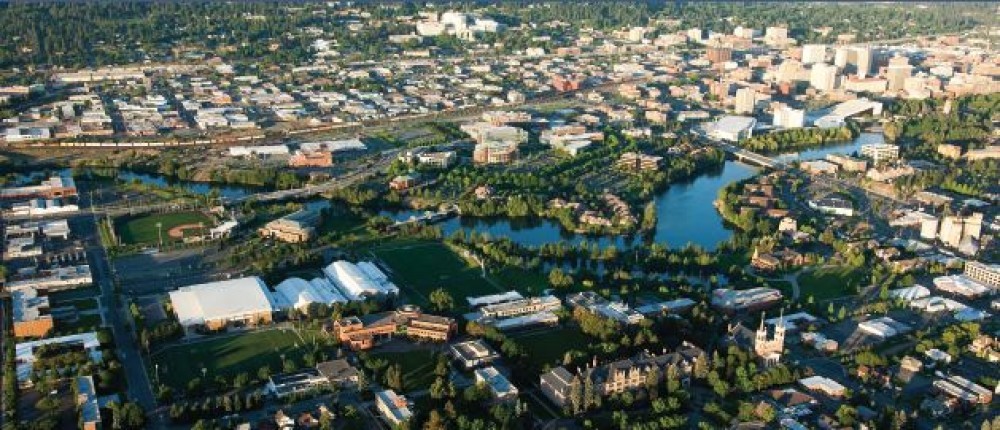Amazon wants 100 acres. Where could a development that large go?
Sunday, October 8, 2017

(as reported by Becky Kramer in The Spokesman Review)
As Greater Spokane Incorporated crafts a pitch for Amazon’s second North American headquarters, real estate is an important consideration.
Amazon cited its Seattle headquarters, with nearby restaurants, coffee shops and services, in its request for proposals. The e-commerce retailer mentions an urban or downtown campus, though it says that’s not required. And Amazon wants 100 acres, capable of accommodating up to 8 million square feet of office space over the next 10 to 15 years.
“That’s a gigantic piece of property,” said Craig Soehren, a commercial real estate broker for Kiemle & Hagood Co. in Spokane.
He uses Kendall Yards for comparison. The mixed-use neighborhood, built on a former industrial site north of the Spokane River, is about 77 acres.
“It would be like putting Amazon into the entire Kendall Yards development,” with additional land still needed, Soehren said.
In some metro areas, vacant malls have been suggested as prospective sites for Amazon’s headquarters. Most metro areas of 1 million-plus, however, will struggle to find 100 acres near their downtowns, Soehren said.
Spokane doesn’t have vacant property of that size near downtown, said Robin Toth, Greater Spokane Incorporated’s vice president of business development.
“You’d have to go outside of the city of Spokane,” she said. “You’re pushing into the unincorporated areas, or into Spokane Valley or Liberty Lake.”
An urban or downtown setting, while desirable, isn’t listed as a requirement in the company’s request for proposals, Toth said. Amazon said multiple parcels can be submitted for consideration, but the properties should be within 10 minutes of each other.
Toth declined to identify the sites GSI will include in its proposal, which is due Oct. 19. But here’s a list of areas that could get consideration.
Spokane’s University District: Close to downtown and home to higher education and research facilities, the U-District probably comes closest to the type of urban environment Amazon has in Seattle.
Amazon’s build-out in Seattle’s South Lake Union area occurred with the help of Paul Allen’s real estate firm, Vulcan, which assembled the acreage for redevelopment. Parking lots and motels were converted into office space.
Something similar would have to occur in the U-District, which is mostly built out, Soehren said. Some of the U-District’s residential or older commercial areas could be targeted for redevelopment, if Amazon is willing to pay for infill development.
Avista owns 6 acres in the U-District, where it plans to develop an office building.
“We’d love to have Amazon or the next Amazon,” said Latisha Hill, Avista Development’s senior vice president.
West Plains: There’s plenty of real estate here. The Spokane International Airport is comprised of 6,100 acres.
“We have 100-acre parcels,” said Todd Woodard, the airport’s director of marketing and public affairs.
In addition, there are several hundred acres of private land, which is poised for future development.
Being near the airport would be an advantage for executives who travel. But the West Plains doesn’t have the urban feel or density Amazon seems to prefer.
Spokane Valley: The city’s northeast industrial area has about 150 acres of contiguous, undeveloped property. The area is south of Trent, between Flora and the city’s eastern limits.
Easy access to the freeway is a plus, but the acreage, which has industrial neighbors, also lacks an urban feel. The land is owned by Centennial Properties, a subsidiary of Cowles Co., which also owns The Spokesman-Review.
Coeur d’Alene. At 80 acres, the former Atlas sawmill site in Coeur d’Alene comes somewhat close to meeting Amazon’s 100-acre requirement. The site is between Seltice Way and the Spokane River, near downtown Coeur d’Alene and adjacent to the Riverstone development. So, the site has the potential for a more urban feel.
But the mill site is about a 40-minute drive from downtown Spokane, which puts it at the edge of the Spokane metro area.